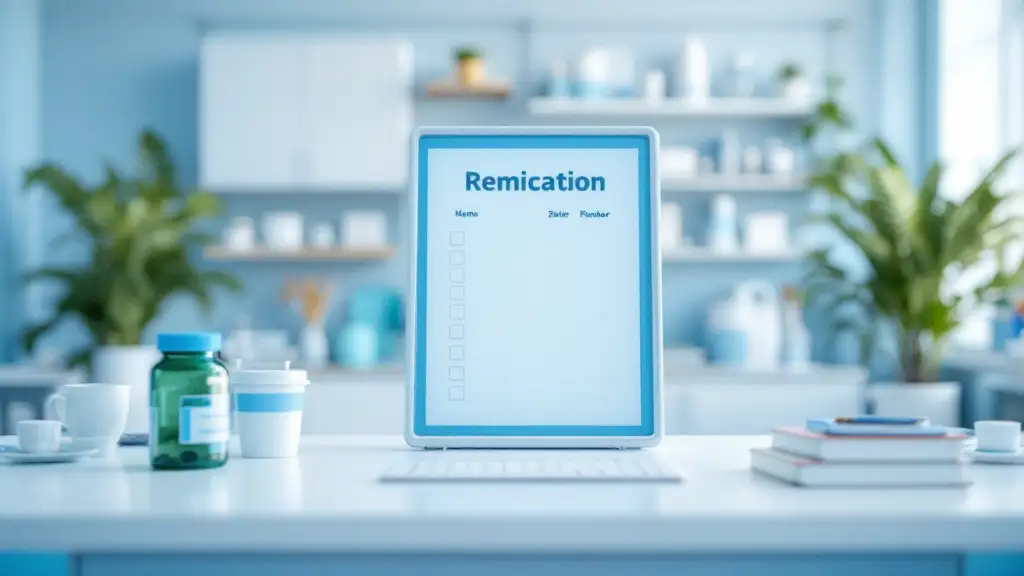Exploring the Efficacy and Implementation of Telehealth-Delivered CBT for Youth
The advent of telehealth has revolutionized the landscape of pediatric mental health treatment, particularly for conditions such as OCD and anxiety. This article delves into the effectiveness, delivery methods, research findings, patient and clinician perspectives, implementation guidelines, and ongoing challenges associated with telehealth-based cognitive-behavioral therapy (CBT) for children and adolescents. By examining recent studies and practical guidelines, we uncover how telehealth is expanding access, maintaining treatment quality, and shaping the future of pediatric behavioral health.
Efficacy of Telehealth CBT for Pediatric OCD and Anxiety
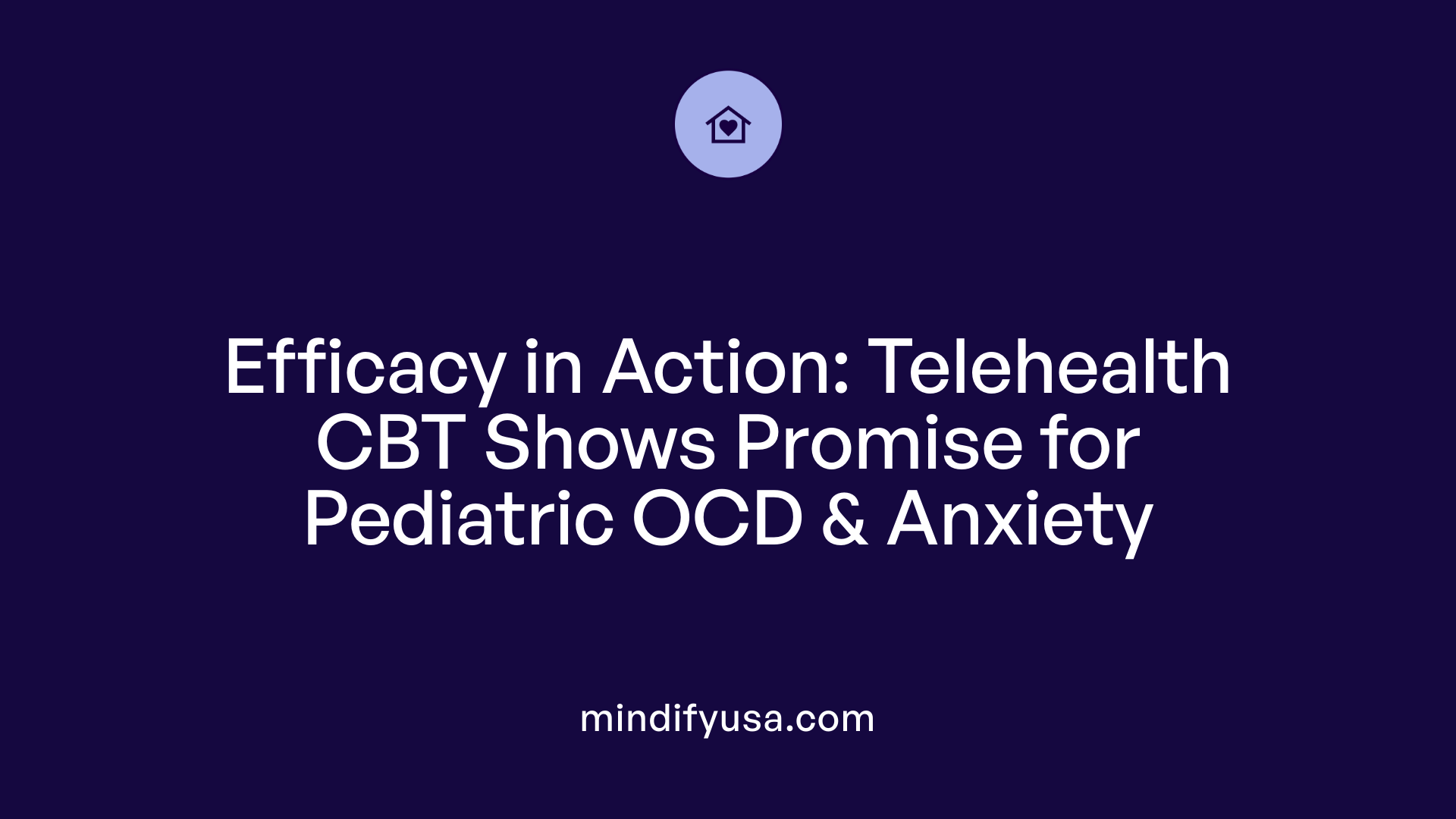 Research supports the effectiveness of telehealth-based cognitive-behavioral therapy (CBT) for children and adolescents dealing with obsessive-compulsive disorder (OCD) and anxiety. Multiple studies indicate that telehealth CBT produces significant symptom improvements, comparable to those achieved through traditional in-person treatment.
Research supports the effectiveness of telehealth-based cognitive-behavioral therapy (CBT) for children and adolescents dealing with obsessive-compulsive disorder (OCD) and anxiety. Multiple studies indicate that telehealth CBT produces significant symptom improvements, comparable to those achieved through traditional in-person treatment.
A large study involving over 1,200 youths aged 7 to 17 showed that patients receiving telehealth CBT responded well, with treatment outcomes closely matching in-person therapy. Discharge scores measuring OCD severity were slightly higher in the telehealth group but not enough to be considered clinically meaningful. Similarly, quality of life scores at the end of treatment did not differ significantly between the two groups.
Long-term follow-up data up to 12 months posttreatment suggests that the responses in telehealth are durable and comparable to face-to-face therapy. These findings are supported by other research indicating that telehealth can match in-person care in reducing anxiety and OCD symptoms among youths.
The virtual format also improves access and attendance, especially for families facing transportation barriers or living in remote areas. Clinicians often report high satisfaction with telehealth, noting its usefulness for engaging clients and delivering effective exposure therapy in natural environments.
Overall, evidence points to telehealth CBT as a practical and effective option for managing pediatric OCD and anxiety, offering comparable results to in-person therapy and broadening access to much-needed mental health care for young people.
Access and Reach During the COVID-19 Pandemic

How has telehealth been used to treat pediatric behavioral issues during the COVID-19 pandemic and beyond?
During the COVID-19 pandemic, telehealth emerged as a crucial method for delivering mental health care to children and adolescents. It allowed clinicians to provide various therapeutic interventions remotely, including cognitive-behavioral therapy (CBT), parent training, and anxiety management, without risking virus transmission. This approach was particularly valuable in maintaining continuity of care despite restrictions and social distancing measures.
Telehealth was utilized for live video sessions, asynchronous activities, and caregiver involvement, effectively supporting children with autism spectrum disorder, OCD, and other mental health conditions. Research demonstrates that these virtual treatments often yielded outcomes comparable to traditional in-person therapy, with some studies indicating even higher engagement and retention rates.
A significant advantage of telehealth was its capacity to reach underserved populations, including those in rural or low-income areas where transportation and logistical barriers limited access previously. It facilitated follow-up care, reduced missed appointments, and enabled clinicians to observe children in their home environments—an aspect that can enhance understanding of ecological factors impacting mental health.
Examples include the widespread adoption of telehealth for home-based interventions, virtual group sessions like Facing Your Fears for autistic children, and parent training programs such as internet-delivered parent-child interaction therapy (iPCIT). These modalities proved effective in reducing symptoms, improving caregiver skills, and enhancing overall quality of life.
Looking ahead, the sustained use of telehealth for pediatric mental health depends on supportive policies, addressing digital disparities, and continued research on its efficacy over the long term. As telehealth continues to evolve, it promises to broaden access and improve outcomes for children with behavioral health needs well beyond the pandemic period.
Guidelines and Resources for Telehealth CBT Implementation

What resources and guidance are available for accessing and conducting CBT through telehealth for pediatric mental health concerns?
There is a growing collection of resources designed to support clinicians and families in delivering and receiving evidence-based CBT via telehealth. Many mental health organizations have developed professional guidelines, training modules, and specialized platforms that provide comprehensive support for virtual therapy. These include webinars, instructional guides, and workbooks—many available in multiple languages such as Spanish—that help clinicians implement trauma-focused CBT (TF-CBT), exposure and response prevention (ERP), parent-child interaction therapy (PCIT), and other evidence-based interventions.
Video demonstrations accessible through platforms like Vimeo illustrate how to deliver TF-CBT effectively in a telehealth setting. Websites often feature educational videos aimed at children and caregivers, addressing trauma, anxiety, and behavioral issues, which enhance understanding and engagement.
Some telehealth providers, like Brightline, offer integrated services encompassing assessments, therapy, and psychiatric care, all emphasizing family involvement and culturally sensitive approaches. These resources assist clinicians and families in understanding technical requirements, privacy considerations, and preparation strategies, ensuring the safe and effective delivery of care.
Funding and insurance coverage for telehealth services have expanded, making access more feasible for many families, especially in underserved communities. Tools and guidance are readily available to support transition and integration of telehealth into standard pediatric mental health care.
What are the key considerations and guidelines for implementing CBT via telehealth for young patients?
Implementing CBT through telehealth for youth involves multiple important considerations. First and foremost is ensuring privacy and confidentiality, which requires using secure, encrypted video platforms and establishing a private space free from interruptions during sessions.
Clinicians should pursue specialized training in telehealth delivery. This training includes understanding platform functionalities, managing safety and emergency protocols remotely, and adapting traditional therapeutic activities to the virtual environment.
Engaging and collaborating with families is critical, especially for younger children or those with disabilities. Family involvement can help mitigate technological barriers, increase treatment accessibility, and foster a supportive environment for therapy.
Effective telehealth implementation also involves ongoing stakeholder engagement, systematic evaluation of implementation outcomes such as acceptability, feasibility, treatment fidelity, and sustainability, as well as adherence to ethical standards and licensing regulations.
Finally, developing safety management plans—covering procedures for handling emergencies or crisis situations—is essential. Utilizing interactive tools like screen sharing, chat functions, and digital worksheets can enhance engagement and therapeutic effectiveness. Overall, these guidelines help ensure that telehealth CBT for youth is delivered safely, effectively, and with high acceptability.
Perceptions and Satisfaction with Virtual CBT
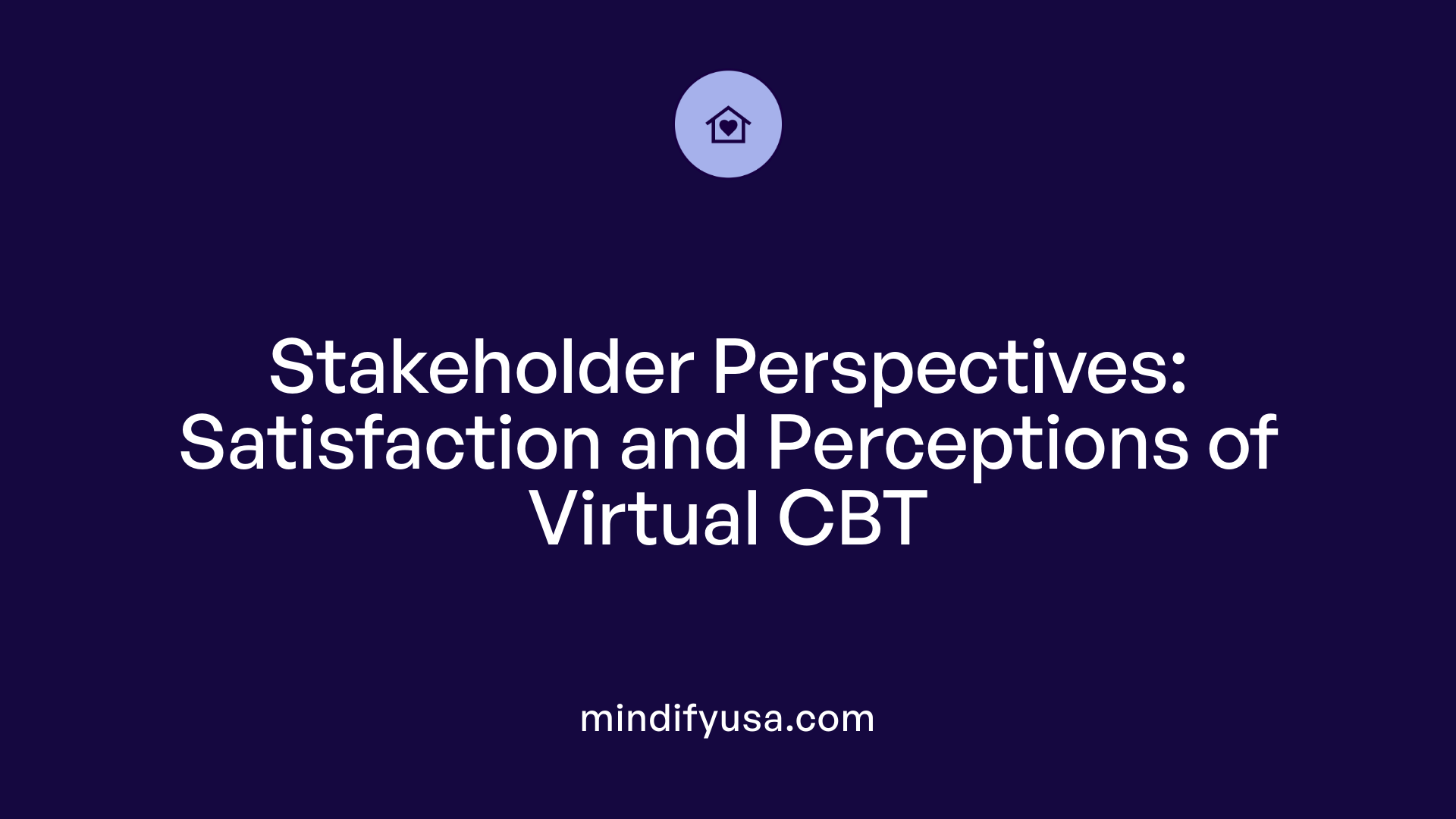
How do patients and clinicians perceive virtual CBT services for pediatric behavioral issues?
Patients and clinicians generally view telehealth-based CBT for children as both practical and effective. Families appreciate the convenience of attending sessions from home, which reduces travel time and scheduling conflicts. This increased accessibility can lead to higher attendance rates and fewer treatment disruptions, especially for families in remote or underserved areas.
Clinicians report overall satisfaction with delivering CBT via telehealth, finding it useful for engaging parents in behavioral interventions, conducting assessments, and observing children within their natural living environments. This setting allows therapists to tailor activities more precisely and observe real-world behaviors, enhancing treatment relevance.
However, both groups also recognize certain challenges. Technological disparities remain a significant barrier; families with limited internet access or inadequate devices face difficulties in participating fully. Moreover, clinicians find it harder to interpret nonverbal cues and maintain engagement with non-verbal or very young children during virtual sessions.
The importance of proper training and support for clinicians is emphasized to maximize telehealth’s benefits. Addressing digital inequalities and providing resources such as devices and stable internet is crucial, especially for low-income families. Despite these hurdles, the overall perception remains positive, with the consensus that telehealth considerably expands access to pediatric behavioral care.
Advantages and challenges
| Advantages | Challenges | Additional Details |
|---|---|---|
| Enhanced access and convenience | Technological inequities | Digital disparities affect low-income families |
| Increased attendance and engagement | Difficulties with nonverbal cues | Harder to read nonverbal communication virtually |
| Observing children in natural settings | Engagement issues with very young children | Younger kids may need more hands-on approaches |
| Flexibility for families | Clinician training needs | Proper training improves telehealth effectiveness |
This evolving preference for virtual therapy highlights a promising future for pediatric behavioral health, provided that barriers are actively managed and tailored strategies are employed.
Best Practices for Delivering Telehealth CBT to Youth
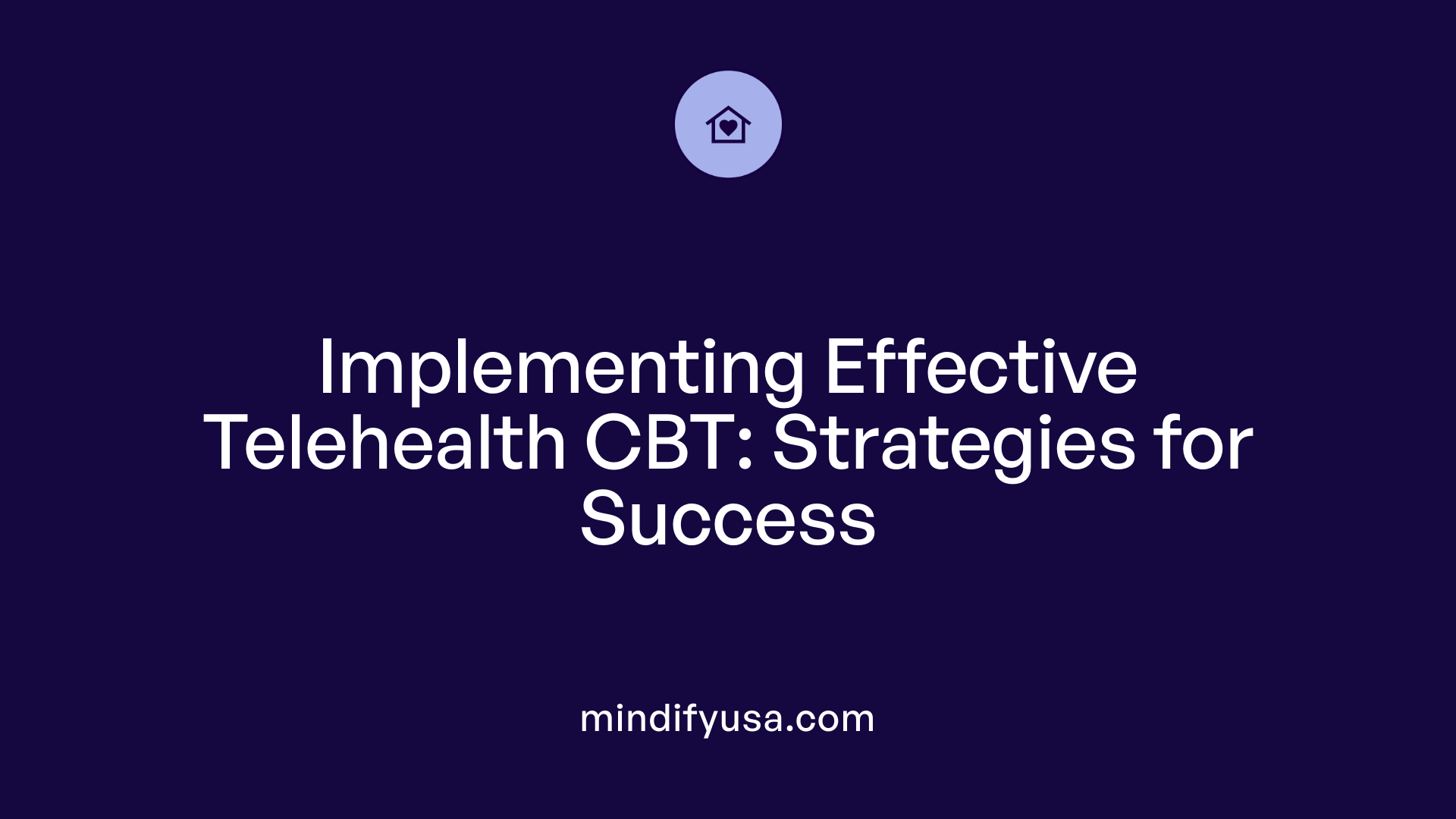
What are best practices for delivering CBT via telehealth to children and adolescents?
Delivering cognitive-behavioral therapy (CBT) through telehealth for young clients requires thoughtful strategies to ensure engagement, safety, and effectiveness. Clinicians should utilize engaging digital platforms such as real-time video conferencing, mobile apps, and asynchronous communication methods that are developmentally appropriate. Tailoring interventions to the child's age, cognitive level, and cultural background enhances treatment relevance and receptivity.
Before starting sessions, therapists must ensure they have the necessary technical skills, including proficient use of telehealth platforms, assessment tools, and emergency protocols. It’s essential to clearly introduce the telehealth modality to both children and their caregivers, explaining confidentiality, privacy, and equipment requirements. Establishing safety protocols and emergency procedures in advance is critical to handle crises that may occur during virtual sessions.
Obtaining informed consent specific to telehealth is a foundational step, clarifying what services are provided virtually and any limitations involved. Caregiver involvement is vital not only for logistical support but also for maintaining confidentiality and ensuring the child's comfort. During sessions, clinicians should adapt evidence-based interventions to suit developmental and cultural needs, making therapy more accessible and effective.
Ongoing training in telehealth delivery, staying updated with emerging guidelines, and continuing research are essential for maintaining high-quality care. Using a personalized approach helps maximize engagement and treatment adherence.
Overall, successful telehealth CBT for youth hinges on a combination of technology facilitation, clear communication, safety planning, and developmentally tailored interventions, fostering a safe and productive therapeutic environment online.
Research Findings on Outcomes and Satisfaction

What does research say about the outcomes of pediatric patients receiving CBT through telehealth?
Research consistently shows that telehealth delivery of cognitive-behavioral therapy (CBT) to children and adolescents produces effective treatment outcomes. Multiple studies have demonstrated notable symptom reductions and high levels of satisfaction among youth, parents, and clinicians.
For instance, children with obsessive-compulsive disorder (OCD) who received intensive CBT via telehealth showed response rates comparable to in-person treatment, with little difference in symptom severity or quality of life scores at discharge. Similarly, youth with anxiety disorders experienced significant reductions in anxiety symptoms following virtual CBT programs, with many meeting criteria for clinical remission post-treatment.
Specialized studies on interventions like trauma-focused CBT for foster children indicate that virtual therapy can lead to substantial decreases in trauma-related symptoms. Nonetheless, some challenges such as high attrition rates due to placement changes highlight the need for adaptable engagement strategies.
Furthermore, treatments targeting externalizing behavior problems, like the internet-delivered parent-child interaction therapy (iPCIT), have also shown promising results. Children displayed improved compliance and lower externalizing behaviors, supported by increases in positive parenting skills among caregivers.
Overall, the accumulated evidence shows that telehealth CBT can be as effective as traditional in-person therapy for a range of pediatric mental health issues. Treatment gains tend to be maintained over time, and the modality fosters accessibility—especially for families living in remote or underserved areas.
Family and patient satisfaction
Caregivers and youths generally report high satisfaction with telehealth-based interventions. Many participants appreciate the convenience, flexibility, and reduced travel burdens, which lead to improved attendance and lower dropout rates. Clinicians also express positive views, noting that the virtual format facilitates observations of the home environment, enhancing the context and generalization of skills.
Most families are willing to continue with telehealth services, with satisfaction levels increasing with clinicians’ longitudinal experience and familiarity with virtual formats. While some challenges exist, such as difficulties in engaging very young children or individuals with severe symptoms, overall, the acceptability of telehealth therapies remains high.
Clinician perspectives
Clinicians report that telehealth has expanded their capacity to reach underserved populations, including minority and low-income families. They find virtual platforms adaptable for delivering evidence-based care, although many acknowledge the need for specialized training and resources to optimize engagement and overcome technological barriers.
During the COVID-19 pandemic, clinicians noted increased flexibility and creativity in therapy delivery, along with the necessity to modify certain intervention components. Despite some limitations—such as reduced non-verbal communication and challenges sharing physical space—they largely regard telehealth as a valuable adjunct or alternative to in-person services, particularly for increasing access.
In summary, research underlines that telehealth CBT for youth is effective, well-liked, and capable of fostering sustained improvement across diverse populations. As telehealth continues to evolve, ongoing research and training will be crucial to maximizing its potential in pediatric mental health care.
Challenges and Limitations in Telehealth Delivery

What challenges and considerations should be addressed when delivering CBT to children and adolescents via telehealth?
Delivering cognitive-behavioral therapy (CBT) to youth through telehealth offers promising benefits but also presents unique challenges that clinicians must carefully navigate.
One of the primary obstacles is technological barriers. Many families, especially those from marginalized or low-income backgrounds, may lack reliable high-speed internet, suitable devices, or the skills needed to operate digital platforms. These disparities can limit access to consistent and effective therapy sessions.
Maintaining engagement during virtual sessions can be difficult, particularly with younger children or those with neurodevelopmental conditions. Limited attention spans and developmental differences require therapists to adapt their approaches continually. Additionally, privacy concerns arise when children attend therapy sessions from shared or unsafe environments. Without a private space at home, children might be less willing to disclose sensitive information, affecting treatment outcomes.
Establishing rapport and conducting core practice elements, like trauma narrative work or exposure exercises, are also more complex online. The physical absence makes it harder for clinicians to observe subtle nonverbal cues or create the same therapeutic alliance experienced in person.
Addressing these issues involves a combination of technological support, such as providing devices or internet access, and tailored engagement strategies that hold the child's interest. Clinicians also need to develop protocols to ensure privacy and safety, like using secure platforms and establishing confidentiality agreements.
In summary, while telehealth expands access to pediatric CBT, overcoming technological hurdles, fostering engagement, and maintaining treatment fidelity are vital for optimal outcomes. Continued training, resource support, and flexible approaches are essential to overcoming these limitations.
Impact of Digital Disparities and Equity Concerns
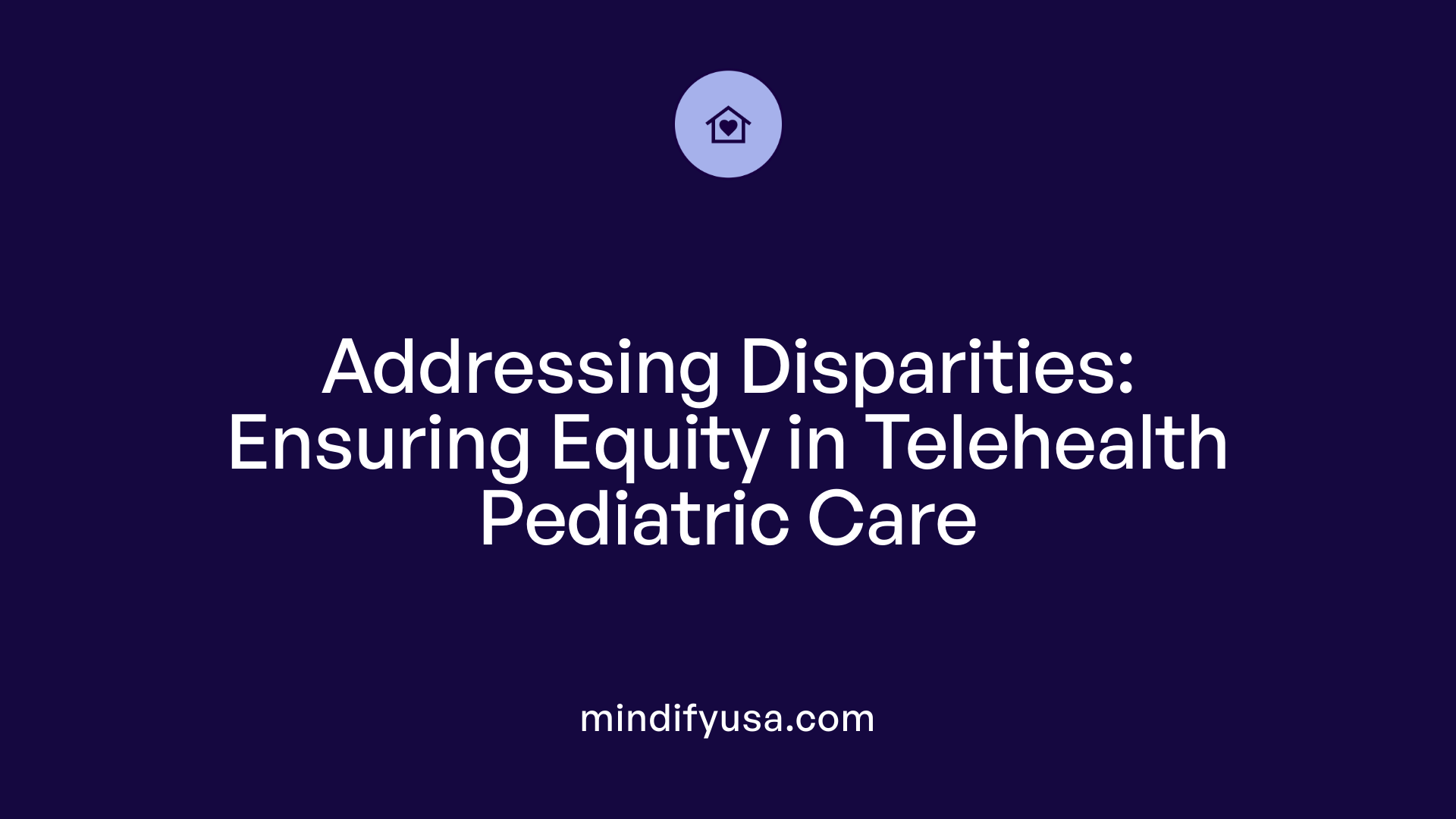
What challenges and considerations should be addressed when delivering CBT to children and adolescents via telehealth?
Delivering cognitive-behavioral therapy (CBT) to children and adolescents through telehealth comes with unique challenges. One major issue involves technological barriers such as limited internet connectivity and the lack of appropriate devices, which can prevent consistent access for marginalized and low-income families. Navigating patient portals and digital platforms may also be difficult for some families, especially those with limited digital literacy.
Engagement is another concern. Young children or those with neurodevelopmental conditions may find it harder to stay focused during virtual sessions. Privacy at home can be a significant hurdle, as young clients might not have a quiet, private space for therapy, risking confidentiality and openness.
Clinicians also face obstacles in establishing rapport and delivering core practice elements remotely. Tasks like managing trauma narratives or conducting exposure therapies—especially those conducted outside the therapy setting—are more challenging virtually. Overcoming these barriers involves providing technological support, tailoring engagement strategies, offering clinician training, and ensuring privacy, all to improve treatment outcomes.
What is the effectiveness of telehealth-based cognitive-behavioral therapy (CBT) for treating pediatric behavioral issues like OCD and anxiety?
Evidence from recent research supports that telehealth-based CBT is just as effective as traditional in-person therapy for pediatric conditions such as OCD and anxiety disorders. Studies indicate significant symptom reductions, with no meaningful differences in outcomes between the two modalities.
Large-scale data show that children and adolescents respond well to telehealth CBT, often with response rates comparable to face-to-face treatment. Satisfaction among patients, parents, and clinicians is generally high, which further affirms its viability.
This mode of delivery significantly improves accessibility—especially for underserved populations—and makes consistent mental health care more feasible. Overall, telehealth CBT emerges as a trustworthy and effective approach for managing common pediatric mental health concerns, expanding the reach of evidence-based therapies.
Conclusion and Future Directions
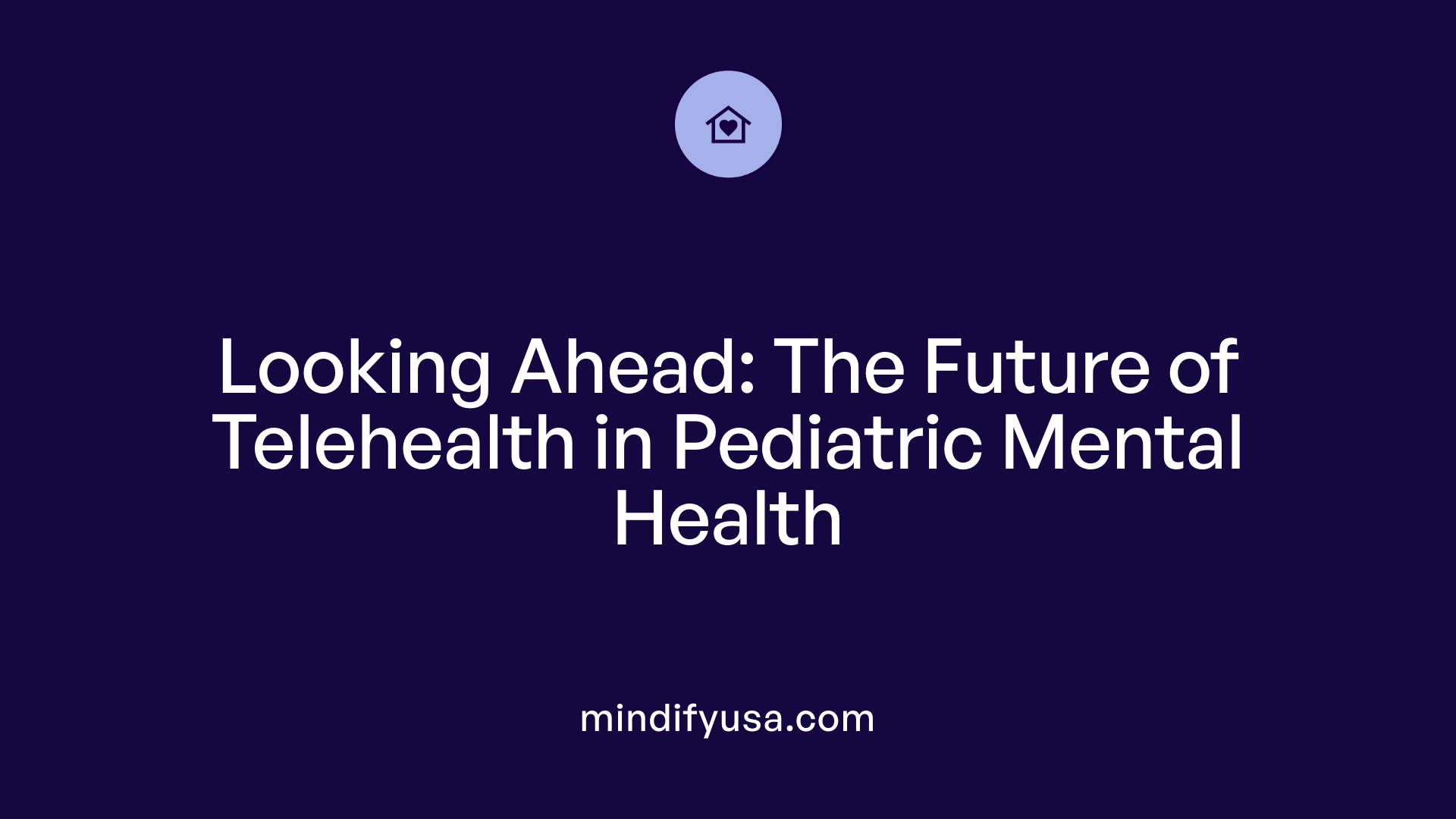
How sustainable and supportive are current policies for telehealth?
The evidence from recent studies highlights the effectiveness of telehealth in delivering mental health treatments to youth. Programs like intensive CBT for OCD, anxiety, and behavioral interventions for children with developmental delays have shown comparable outcomes to traditional in-person services.
However, sustainable implementation depends on strong policy support. Many regions are now expanding telehealth services, especially in child welfare and mental health care, recognizing its potential to increase access for underserved populations. Continued policy backing, including funding for technology access and regulations that facilitate safe telehealth practices, is crucial.
What further research is necessary?
While initial results are promising, ongoing research is needed to explore long-term outcomes of telehealth interventions. Studies should examine the impact across diverse populations, including those with severe symptoms or comorbidities.
Research should also focus on understanding which specific client characteristics predict successful telehealth engagement and how to tailor approaches accordingly. Additionally, exploring innovations like augmented reality or improved digital tools can enhance therapy quality.
Can telehealth be adopted more broadly?
The potential for widespread implementation of telehealth in pediatric behavioral health is significant. It can eliminate geographical barriers, reduce transportation issues, and increase treatment adherence.
To maximize this potential, health systems need to address digital disparities by ensuring equitable access to devices and reliable internet. Training clinicians in telehealth delivery and establishing standardized protocols will empower professionals and improve service consistency.
Overall, integrating telehealth into standard care models has the capacity to transform pediatric mental health services, making them more accessible, flexible, and responsive to family needs. Future policies, continued research, and technological advances will shape how effectively this mode of delivery can serve children across diverse settings.
Shaping the Future of Pediatric Telehealth Care
As telehealth continues to evolve, its role in delivering effective, accessible mental health services for children and adolescents is poised to expand further. Ongoing research underscores its comparable efficacy to in-person therapy, particularly for anxiety and OCD, while addressing implementation challenges like technological disparities remains critical. Strengthening guidelines, increasing training, and fostering innovations that enhance engagement—especially for underserved populations—will be essential for long-term success. Policymakers, clinicians, and families must collaborate to sustain and improve telehealth infrastructure, ensuring equitable access and quality care. The future of pediatric behavioral health treatment hinges on integrating telehealth as a core component—making therapy more inclusive, adaptable, and responsive to the needs of diverse populations.
References
- Intensive Cognitive-Behavioral Therapy Telehealth for ...
- Telehealth Treatment of Behavior Problems in Young ...
- Virtual delivery of group-based cognitive behavioral ...
- To Proceed Via Telehealth or Not? Considerations for ...
- Community Mental Health Clinicians' Perspectives on ...
- Guidance for the telehealth delivery of cognitive-behavioral ...
- Telehealth in Child Welfare































































































